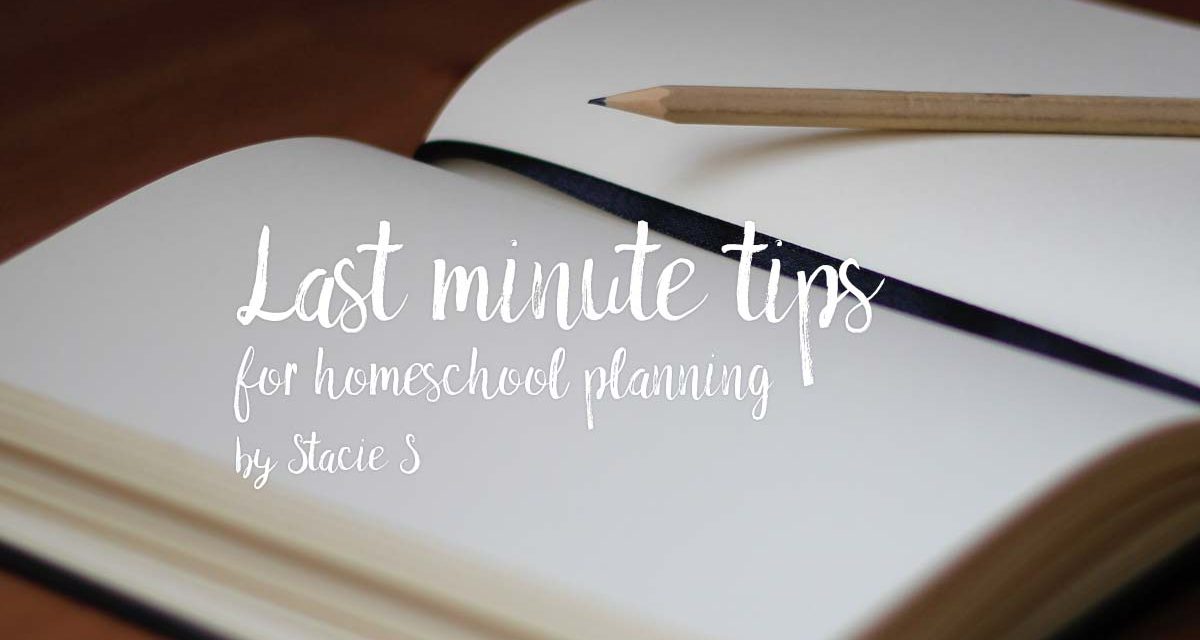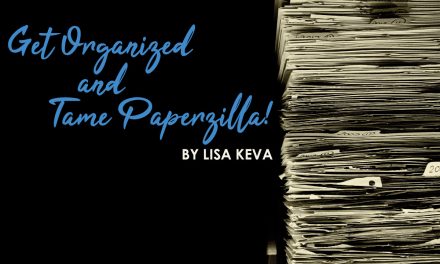It’s Back to School season right now, even among homeschoolers. For as flexible as we claim to be, most of us follow a more traditional school year–myself included. So what if we aren’t quite ready to start and are feeling like there are loose ends we still need to tend to? Here is a quick list of things that can be done relatively easily to help homeschooling get off to a good start and continue to flow well.
Create a daily flow for each subject
Not all of us use a curriculum that has lesson plans laid out for what we are to do each day. In fact the majority of my curriculum is not laid out for me. So it helps me to make my curriculum choices “open and go”. I do this by selecting assignments in advance to be done each time we do that subject. (This is great when homeschooling more than one child because you can use that assignment list for the next child!) I also create a daily flow to each subject. For example, in science, my middle grade children work according to this rhythm every science period:
- Read the lesson up to the “experiment” section.
- Complete the experiment and then complete the rest of the reading.
- Define any science terms and copy any science principles.
- Answer the discussion questions/notebook page.
Then I put that daily flow plan on a sticky note or index card (taped) inside the child’s text book or notebook, so they will know what’s expected and it help them become more independent in their work.
*Note: selecting assignments in advance can be done for the entire school year, half the school year, or quarterly. . .just so long as you are ahead of where your children are.
Print worksheets and make photocopies ahead of time
It never fails that in the middle of a lesson, you realize that you need a paper printed and you don’t have it. My experience has been that I can’t find the original, or that my printer won’t work, or that my computer is running slowly. Meanwhile the kids are kind of in a lull, waiting for me to fix the problem. It just becomes an interruption to our day.
Weekly work binder
Now that you’ve printed a massive stack of papers ahead of time, file them away according to subject, grade, child or whatever works for you. Then before the start of each school week, put whatever worksheets or print-outs each child needs for the week into that binder, again filed according to subject, grade, child, day, etc. This keeps hand-outs in a central location so each person knows exactly where to find what they need for the week. I can keep up with my little ones’ work and my older children know where to get what they need without needing to ask me. Also, it makes their work portable as we do our school work in a couple of different places in our home.
Color code
This tip is as old as they come, yet I’d never tried it before…until now. I’ve got four kids that I’m officially schooling and our colors are green, blue, black and red. We are using composition notebooks this year, and those colors were readily available. Plus, green and blue are my oldest girls’ favorite colors, so that worked out great. Anyway, I’m not big on color coding every little thing (like cups, plates, and bath towels), but I do like the convenience of being able to glance at a notebook and know exactly who it belongs to. Color coding by child might not be your thing, but you could color code by subject or day of the week to help you organize school work.
Organize materials in a way that makes sense to you
So, if the above color coding advice sounds like a nightmare to you, don’t do it!! Go with what makes sense for your family. For example, our history book suggested organizing and written work by continent or and our writing curricula said to organize essays by type (narrations, historical, fiction, etc.). While that sounded great when I read it and organized binders, it ended up being a disaster for me. I realize I am a chronological mama–I like things to be filed in the order they were completed so that I’m better able to see my children’s progress. Also, when my homeschool portfolio review comes around, I can pull samples of their work, in order, to show a logical progression of what they did each month. So we will simply organize things one lesson at a time.
Get a new planner; don’t wing it
It’s just better for all involved if you have some way to track each day. You can purchase a planner, from a simple calendar book to something that schedules every hour of the day. It can be on paper or online. What has worked for me is to make my own planner each year. There are tons of free planning pages online so it can be very simple to pull together a custom planner to fit you and your family. In times past, I found that the planners I purchased had 2 major problems: 1. lots of pages I never used and 2. not enough space to write in daily assignments. So, I make my own now and I love it. If you choose to do this, you can print the pages and stick them in a binder (which is what I do) or take them to an office supply store and have it laminated and comb bound for you.
Whether you’re still in the planning stages or even if you’ve already started schooling again, these tips can be implemented at any time. Happy schooling!





